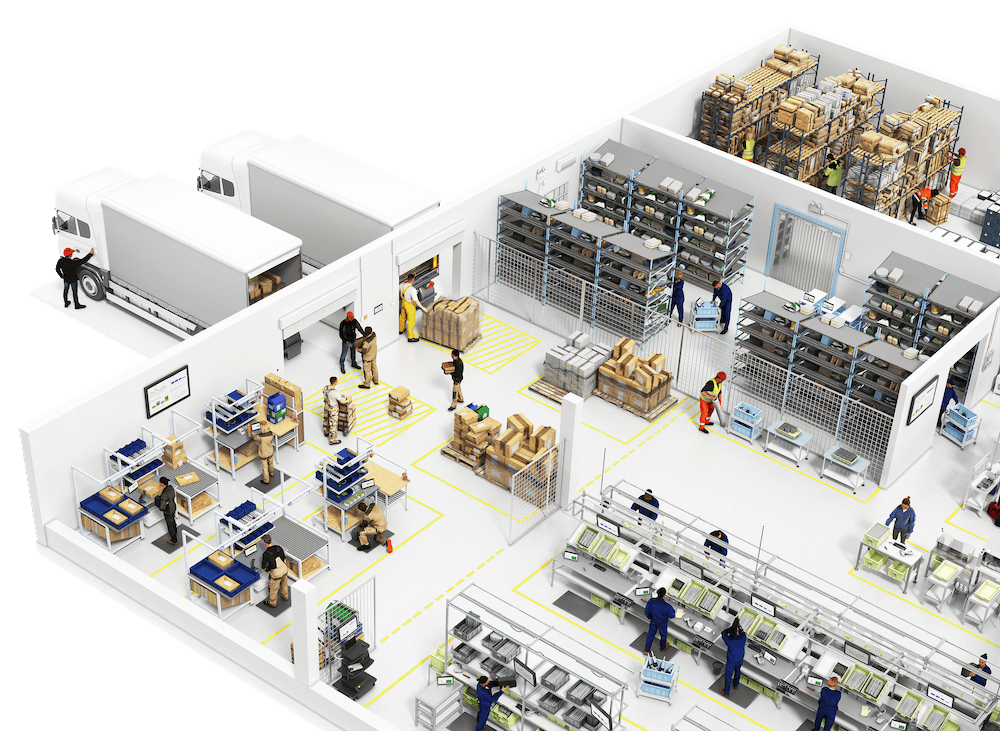An Overview of Poka-Yoke
Poka-yoke is a lean manufacturing tool that refers to “mistake-proofing” or “error-proofing” a process. It was originally coined by Shigeo Shingo in the 1960s and implemented at Toyota as part of the Toyota Production System (TPS).
Poka-yoke is also present in our everyday lives, although many examples are so mundane that we often don’t realize they are there. Error-proofing in everyday life ranges from safety features that prevent us from getting injured to spell check, which simply prevents us from making spelling errors that make us look dumb.
Here are 10 examples of Poka-Yoke in our everyday lives
1. Car safety features
Cars are equipped with many “error-proofing” features to keep us safe on the road. Many cars will beep, or light up, if doors are open while the engine is running, or if someone is in the passenger seat and their seatbelt is not fastened. These are examples of warning functions, which alert users to potential errors.
Safety technology has advanced significantly in recent years. Many cars nowadays come equipped with sensors that alert the drivers if they are leaving their lane or warn them if they are too close to another car (or other object).
2. Treadmills
Treadmills are required to come equipped with a safety clip which, when pulled, stops the treadmill. This safety feature halts the treadmill if the user falls (assuming that the user is wearing the clip) in order to prevent injury.
3. Microwaves, washing machines, dishwashers, and other household appliances
Many household appliances such as microwaves, washing machines and dryers, and dishwashers have mechanisms that prevent them from running when the door is open. These are examples of control functions, which prevent the process from running until required conditions (i.e. the door being closed) have been met.
Increase productivity and drive continuous improvement with Tulip
Digitize your lean manufacturing practices, collect and analyze data in real-time, and remove communication barriers.
4. Elevators & garage doors
Most elevators are equipped with sensors that prevent the doors from closing if there is something or somebody in the way. Garage doors, subway doors, and other automatic doors are also equipped with this feature. Many elevators also beep and refuse to run if they exceed the weight limit.
5. Spell-check functions
Spell-check is an example of a common, yet overlooked means of error-proofing in our everyday lives. Our phones, software, and internet browsers are equipped with these tools that alert us to (and often automatically correct) spelling and grammatical errors, preventing us from looking foolish in our communications–a true example of “fool-proofing!”
6. Leak-proof water bottles & travel mugs
Some travel mugs and water bottles require the user to press and hold a button in order to drink from them. This mechanism prevents the contents from leaking or spilling out when the user is not drinking from the container.
7. Power outlets and USB plugs
Many plugs, such as 3-pin plugs and USB plugs, are designed so that they can only be inserted into the outlet in one orientation–a classic example of the “contact” method of error-proofing, which uses the object’s physical shapes to prevent mistakes from being made.
8. Overflow outlets in sinks
Many sinks have a hole right below the pipe that prevents water from overflowing if the drain is blocked.
9. Lawnmower safety bars
In the United States, lawnmowers are required to have a “deadman control,” or some sort of mechanism that must be engaged in order for the blades to move. This control often takes the form of a lever attached to the handle that the operator must press in order for the lawnmower to run.
10. Wheelchair wheels
Wheelchair wheels are designed to lock when the chair isn’t in motion. This ensures the occupant doesn’t slip when moving in and out of the wheelchair, or ends up in a dangerous situation with a runaway chair.
Learn more about how poka-yoke can help you error-proof your manufacturing processes in our Ultimate Guide to Poka-Yoke!
Error-proof your operations with Tulip
Learn how manufacturers are digitizing quality management processes and error-proofing production with guided workflow apps.
